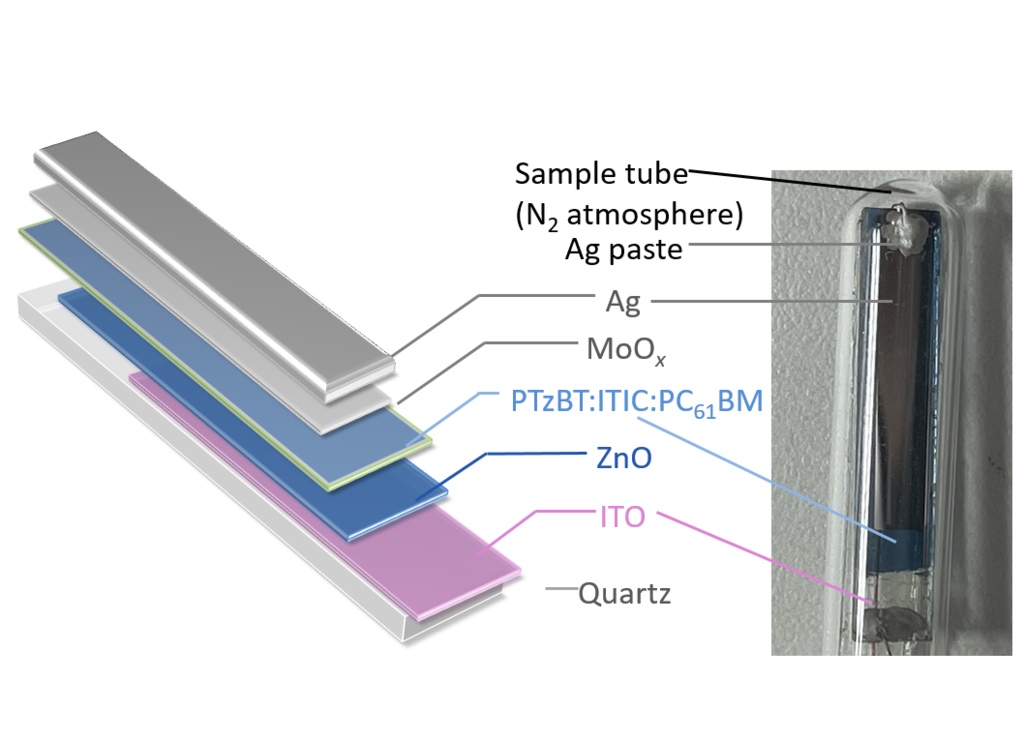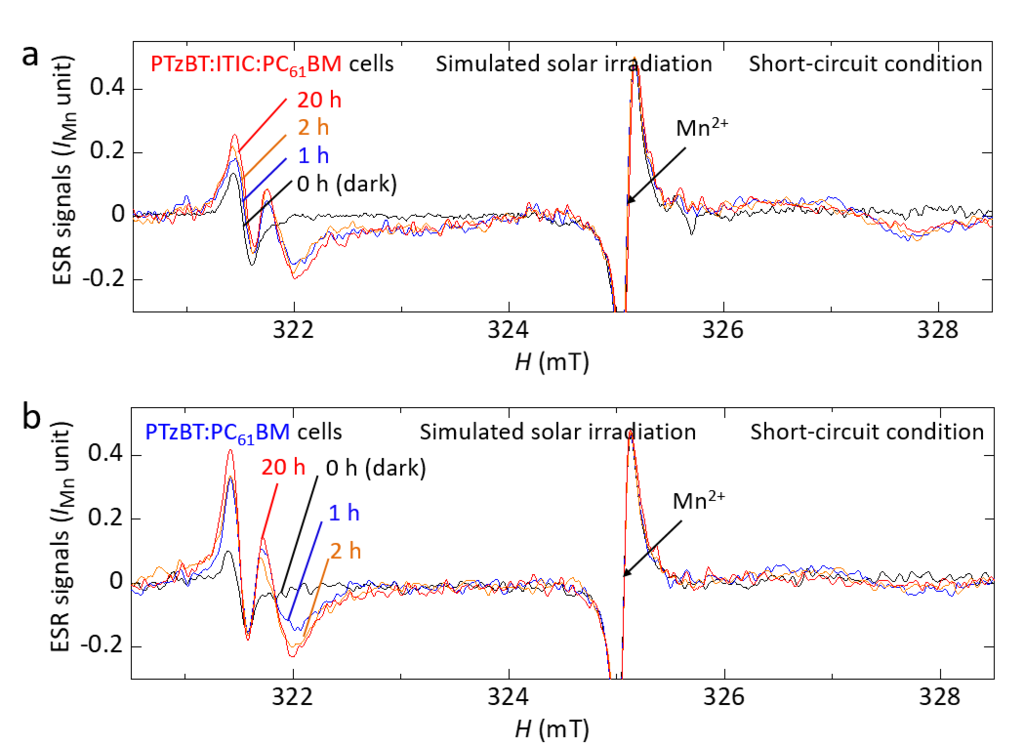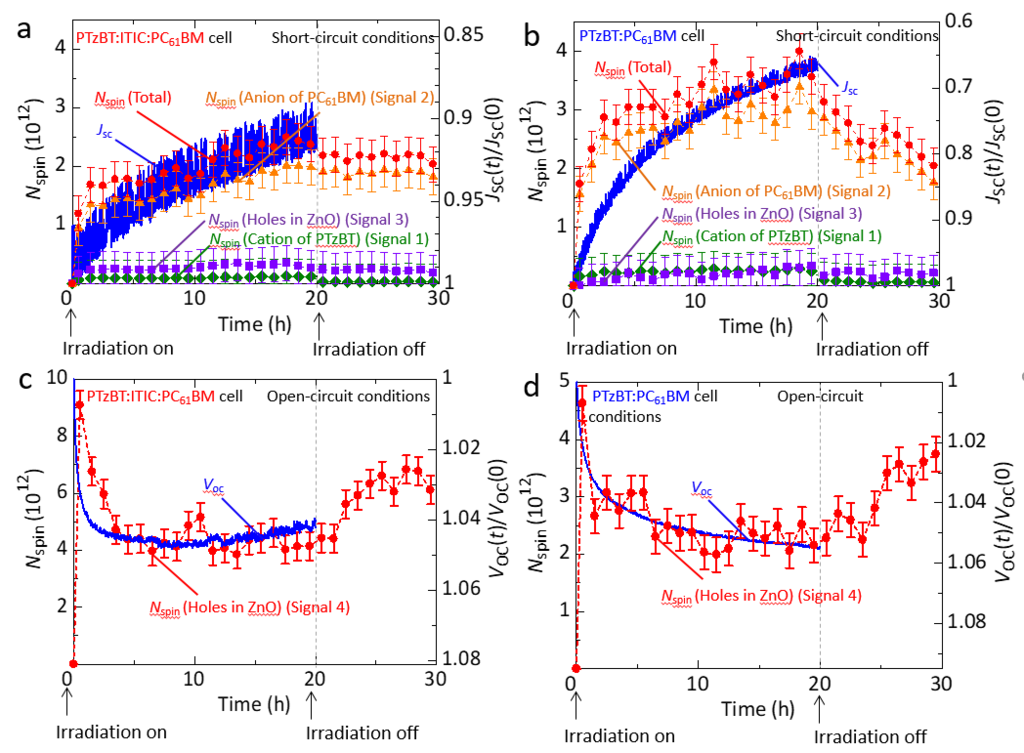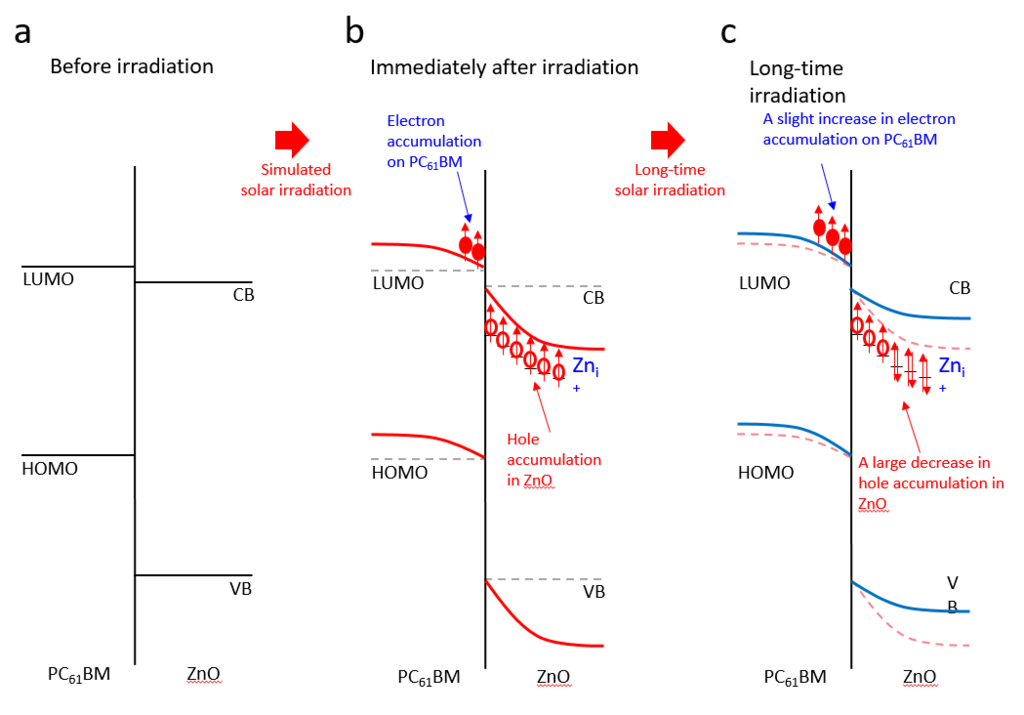・It clarifies the correlation between the device performance and the number of spins (Nspin) that corresponds to the number of accumulated charges in the cells.
・The performance changes in the solar cells are subject to changes in the state of the photoactive layer and electron transport layers, which are the constituent materials of solar cells.
・Applying an n-type semiconductor among the three types of semiconductor materials to the photoactive layer suppresses the accumulation of charge due to light irradiation, thereby reducing the degradation of the solar cell.
Abstract
Ternary polymer solar cells based on a thiazolothiazole-based polymer donor (PTzBT) and a fullerene acceptor (PC61BM) have attracted attention because they show high efficiency and stability by addition of a non-fullerene acceptor (ITIC). However, the performance improvement mechanism is not completely elucidated. Here, we show the stability improvement mechanism due to less charge accumulation in the PTzBT cells with ITIC using operando electron spin resonance from a microscopic viewpoint. We observed two correlations between device performance and number of spins (Nspin) under solar irradiation. One correlation is the decrease in short-circuit current and the Nspin increase in electrons on PC61BM and holes in PTzBT, where the ITIC addition causes the less these Nspin. The other correlation is the increase in open-circuit voltage and the Nspin decrease in holes in ZnO. These findings explain the stability improvement mechanism, showing the correlation between less charge accumulation and higher stability, which is valuable for the development of further efficient and stable polymer solar cells.
Benefit
With the operando ESR measurements, the researchers found the stability improvement mechanism at the molecular level due to less charge accumulation in the solar cells. These findings could explain the performance improvement and deterioration of the cells.
Market Application
・Efficiency evaluation of macromolecular polymer materials, such as any types of solar cells, organic electroluminescence display, and a CFRP
Publications
・https://www.nature.com/articles/s41528-022-00153-z
Other
・https://www.tsukuba.ac.jp/en/research-news/20220420180000.html
・https://www.nature.com/articles/s43246-021-00129-y




